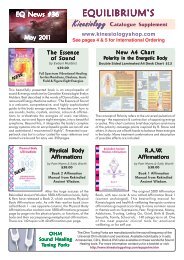You also want an ePaper? Increase the reach of your titles
YUMPU automatically turns print PDFs into web optimized ePapers that Google loves.
Mycotoxins Test Kit<br />
27 vials<br />
Mycotoxins are produced by molds. One mold species may produce many different mycotoxins, and the<br />
same mycotoxin may be produced by several species.<br />
Mycotoxins have the potential for both acute and chronic health effects via ingestion, skin contact, and<br />
inhalation. These toxins can enter the blood stream and the lymphatic system. They inhibit protein synthesis,<br />
damage macrophage systems, inhibit particle clearance of the lung, and increase sensitivity to bacterial<br />
endotoxin.<br />
There is evidence that they can cause cancers, kidney damage, gastrointestinal disturbances, reproductive<br />
disorders and suppression of the immune system.<br />
MT01 Aflatoxins<br />
Produced by Aspergillus<br />
Symptoms include anorexia, lethargy, muscle weakness, liver problems (haemorrhages, necrosis and cancer)<br />
and engorged kidneys.<br />
MT02 Alternariol<br />
Produced by Alternaria<br />
A toxic metabolite of the Alternaria fungi. Naturally occurs on fruits, vegetables, and cereals, such as apples,<br />
tomatoes, and wheat. Inhibited by light. Highly toxic. May be mutagenic.<br />
MT03 Altertoxin<br />
Produced by Alternaria<br />
MT04 Brevianamide<br />
Produced by Aspergillus sp. (particularly Aspergillus ustus); Penicillium sp.<br />
Causes inflammatory response in lung cells.<br />
MT05 Chaetoglobosin A,B,C<br />
Produced by Chaetomium, Penicillium discolor<br />
Found in water-damaged houses and in air-conditioning systems.<br />
MT06 Citreoviridin<br />
Produced by Aspergillus terreus, Penicillium toxicarium, Penicillium ochrosalmoneum<br />
It is believed to be the cause of the acute cardiac Beri-Beri disease.<br />
MT07 Citrinin<br />
Produced by Aspergillus carneus, Penicillium citrinum, Penicillium expansum, Penicillium verrucosum<br />
Occurs mainly in stored grains, but also in other plant products such as beans, fruits, fruit and vegetable<br />
juices, herbs and spices, and also in spoiled dairy products; the cause of yellow rice disease in Japan. Has<br />
been shown to result in enlarged kidneys and livers in young broiler chicks.<br />
MT08 Cladosporic Acid<br />
Produced by Cladosporium<br />
MT09 Cyclopiazonic Acid<br />
Produced by Aspergillus flavus, Aspergillus versicolor, Penicillium camemberti, Penicillium commune, Penicillium<br />
griseofulvum, Penicillium palitans<br />
MT10 Cytochalasin<br />
Produced by Aspergillus clavatus, Bioploaris, Phoma, Zygosporium<br />
Inhibits cellular processes such as cell division,<br />
MT11 Diplodiatoxin<br />
Produced by Diplodia<br />
MT12 Fumonisins<br />
Produced by Fusarium moniliforme<br />
Found in wheat and maize. Also to a lesser extent in rice, sorghum and navy beans. Implicated in oesophagal<br />
cancers.<br />
MT13 Gliotoxin<br />
Produced by Penicillium, Aspergillus, Alternaria, Trichoderma, Gliocladium<br />
Possesses immunosuppressive properties. May be implicated in autism.<br />
Page 100 Copyright Jane Thurnell Read 2012 Testing Kit Description Manual



